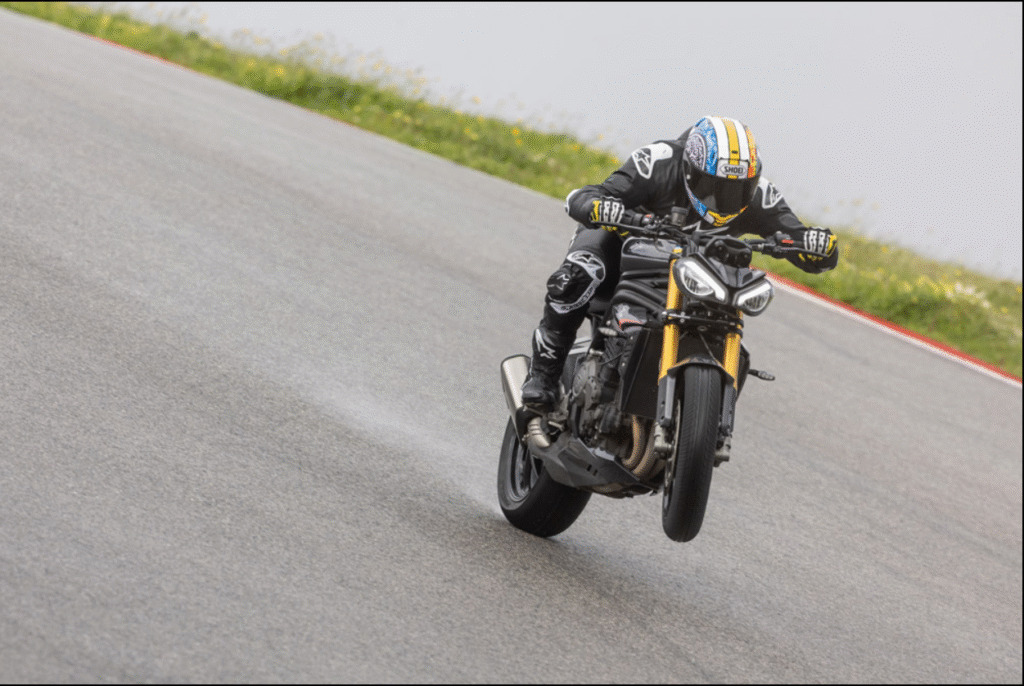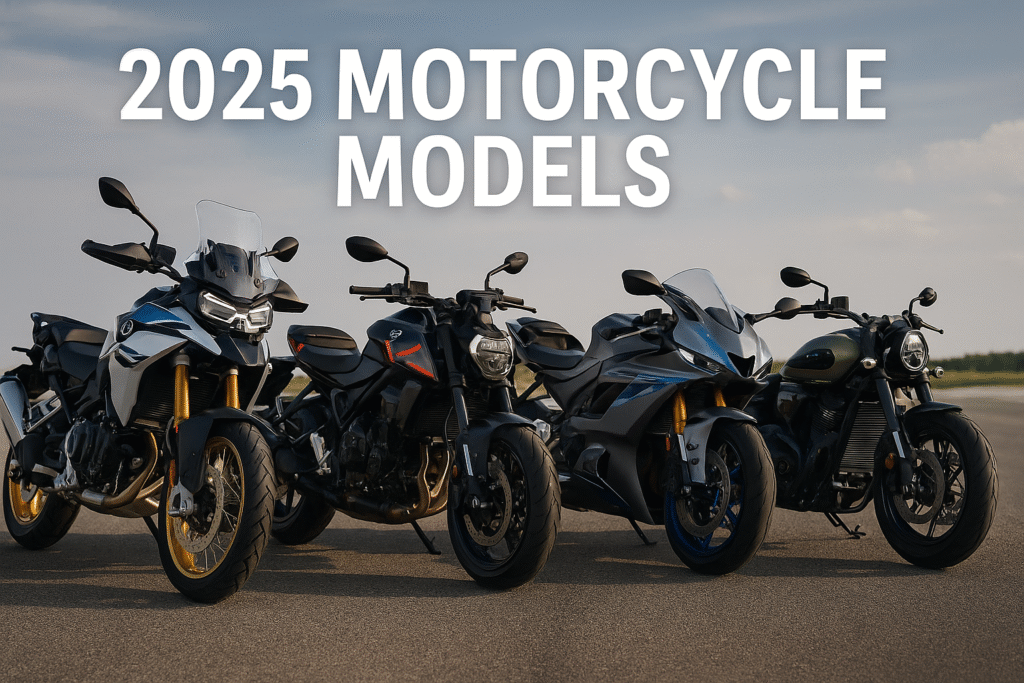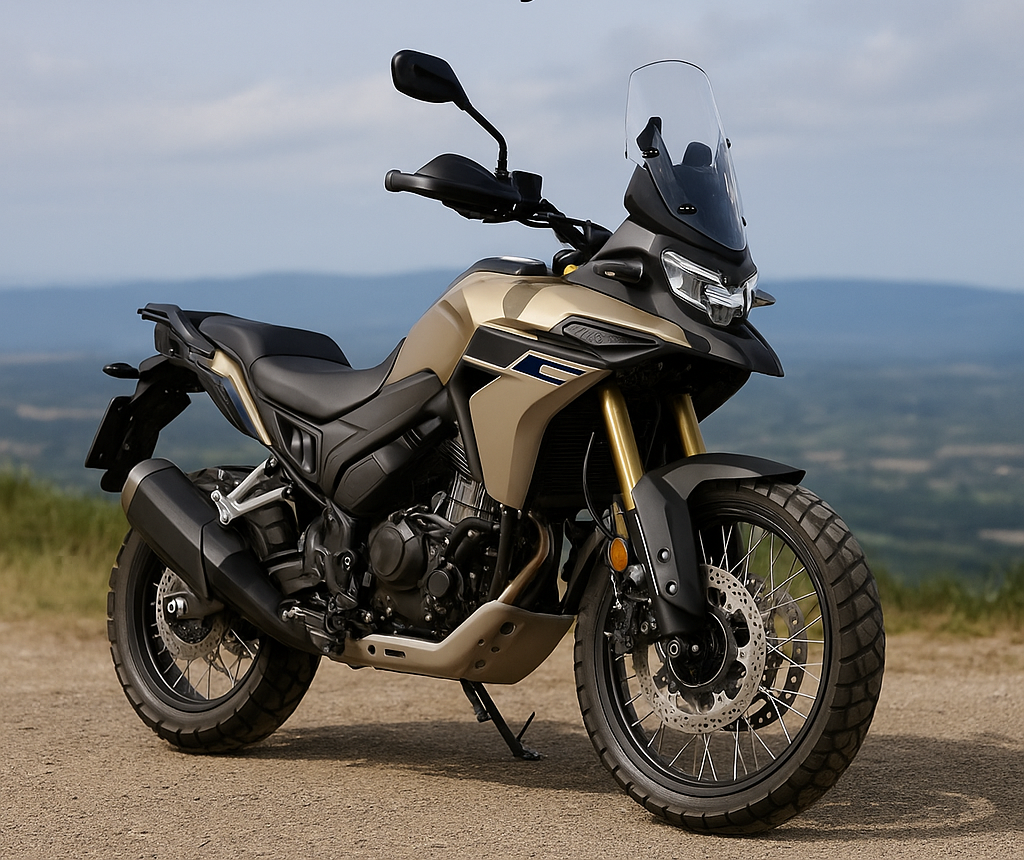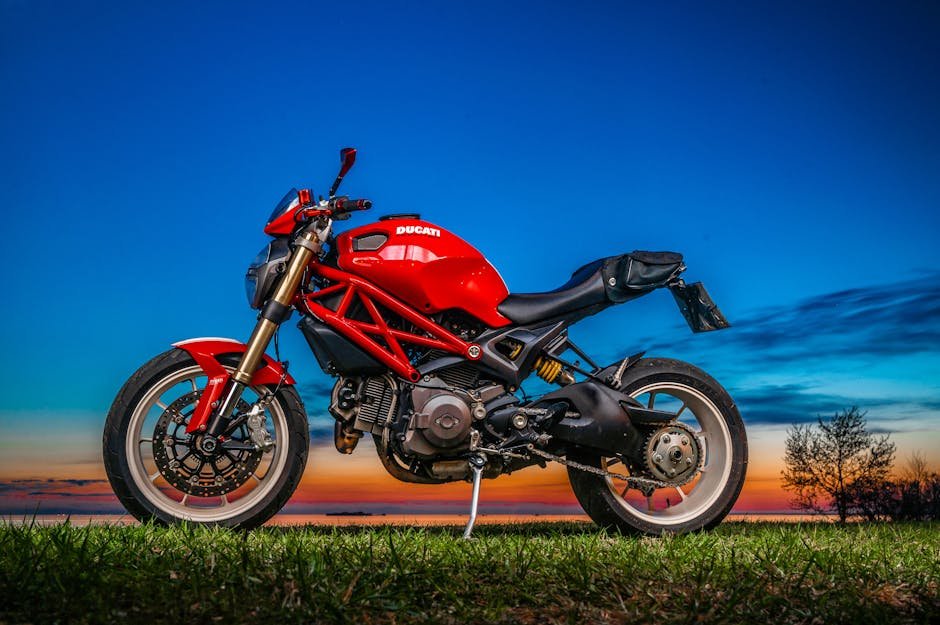Table of Contents
What’s New for 2025?
Triumph’s Speed Triple has always been a streetfighter icon, and for 2025 it receives a host of upgrades to cement its place at the forefront of the super-naked class. Visually, it still looks similar to the 2021–2024 model with its aggressive twin headlights and muscular stance. But underneath, Triumph has made significant revisions:
Semi-Active Suspension: The biggest change is the adoption of Öhlins Smart EC3 electronically controlled suspension front and rear. This state-of-the-art setup actively adjusts damping on the fly. It’s the same high-end system used on superbikes like the Ducati Panigale V4 S and Honda CBR1000RR-R SP, marking the first time Triumph has put semi-active suspension on a production bike. The suspension can be set to modes (Comfort, Normal, Dynamic) or “fixed” manual settings, giving riders a wide range of feel.
More Power: The 1160cc triple gets internal tweaks (revised crankshaft balancing, freer-flowing exhaust) that boost output by about 3 bhp to a claimed 180.5 hp @ 10,750 rpm, with torque up slightly to 94.5 lb-ft @ 8,750 rpm. That cements the Speed Triple as one of the most powerful naked bikes on the market.
Electronics Upgrade: A new integrated 6-axis IMU supports improved traction control and for 2025 Triumph added an advanced wheelie control with 4 settings and an adjustable engine-brake control. The riding modes (Rain, Road, Sport, Track, plus Rider-configurable modes) have been refined to work seamlessly with the semi-active suspension.
Chassis and Ergonomics: Lighter wheels reduce unsprung weight, and Triumph widened the handlebar by 10mm and raised it by 7mm for a bit more leverage. A new adjustable steering damper from Marzocchi keeps the front end stable during aggressive riding. Overall weight remains around 439 lbs wet (199 kg) – about the same as before, but given the added electronics and hardware, maintaining this weight is an achievement.
Styling and Trim: Subtle styling updates include a new seat cowl and “Triumph” logo on the tank, plus an available Speed Triple 1200 RS special color scheme. The bike looks sleek and modern, but still unmistakably a Speed Triple with its minimal flyscreen and single-sided swingarm proudly on display.
These changes aim to make the Speed Triple not just a brute-force street machine, but also a more refined one – hence Triumph’s claim that this is their “most advanced motorcycle ever”. On paper, it certainly has the credentials to challenge anything in the class.
Engine Performance – Triple Threat
At the heart of the Speed Triple RS is Triumph’s 1160cc inline-three, an engine celebrated for its blend of torque-rich character and smooth power delivery. For 2025, it’s more potent than ever: 180 hp and 94 lb-ft (up from ~177 hp and 92 lb-ft previously). In practice, the motor feels ferocious yet remarkably tractable.
From a dig, the RS lunges forward with a fierce urgency – 0–60 mph comes in around 3 seconds, and it will crack 100 mph in just over 6 seconds. Yet thanks to the ride-by-wire throttle and refined fueling, power comes on in a predictable, controllable way. Around town in Road mode, the fueling is softened and the quickshifter slides through the 6 gears smoothly, making the RS feel almost gentle. But twist the throttle hard, and the bike’s “raw” side shows: the triple howls toward its 11,000 rpm redline, and the front wheel will happily lift in the first three gears (unless the wheelie control is intervening).
One remarkable aspect is the engine’s flexibility. With 90% of peak torque available from around 3,500 rpm up to 9,000, there’s punch at any revs. You can lug it in a high gear and still surge forward without downshifting – great for carving backroads without constantly rowing the gearbox. But if you do enjoy revs, the top-end rush is exhilarating. Testers hit an indicated 155–160 mph on the front straight of Portimão circuit, where the Speed Triple’s motor was “pushing hard against my neck and arms like any big naked bike would”. Clearly, 180 horsepower is no joke on a naked machine.
The updated exhaust (derived from the Street Triple 765 Moto2 Edition) saves about 150 grams and emits a slightly fruitier note. It’s still Euro 5 compliant, so it’s not outrageously loud, but it has a pleasing bark in the mid-range and a snarling wail at high rpm. Many riders will still opt for an aftermarket can (Triumph will gladly sell you an Akrapovič slip-on), but even stock, the sound is engaging – a distinctive triple warble that sets it apart from four-cylinder rivals.
Triumph’s gear-driven counterbalancer keeps vibration low for a triple, and over our test rides, the engine proved faultless – no flat spots, no abrupt throttle issues. Heat management is decent too; in traffic, the bike gets warm, but not scorching. The new electronic enhancements, like adjustable engine braking, let riders tune how much the bike slows on a closed throttle – useful on track to settle the chassis. Overall, the 2025 engine is a masterpiece: savage when you want it, civil when you need it, and now with an extra layer of electronic polish.
Suspension & Handling – High-Tech Precision
The shift to Öhlins Smart EC3 suspension elevates the Speed Triple’s handling to superbike territory. In the default Road mode, the semi-active suspension delivers a surprisingly plush ride. Bumps and rough pavement are smoothed out as the system continuously adjusts damping – perfect for city streets or long hauls. One tester noted the RS felt “smooth and forgiving” even on choppy roads, a big improvement over the previous model’s manually-adjusted but firmer Öhlins setup.
Dial up Sport mode, and the suspension firms up noticeably. The bike becomes tauter, with reduced fork dive and sharper responses in corners. On a twisty mountain road, Sport mode gave excellent front-end feedback and kept the chassis composed when pushing hard. Yet it still wasn’t harsh – a testament to the EC3’s ability to adjust within milliseconds to changing conditions. You can also create custom suspension profiles or even switch to a Fixed mode that emulates traditional damping settings if you prefer a consistent feel. This flexibility means the RS can be a comfy commuter one moment and a track weapon the next, just by toggling modes.
On track at Portimão, we experimented with settings and found that the Comfort mode was too soft (understandably) for aggressive track riding, causing a bit of wallow. Bumping to a firmer setting (Normal/Dynamic) made the bike feel much more at home. Once dialed in, the Speed Triple carved through fast sweepers and tight chicanes with confidence. Its 47mm Öhlins NIX30 fork and TTX36 shock kept the Pirelli Supercorsa SP tires planted even as we trailed deep into corners and accelerated hard out of them. The semi-active system even manages weight transfer well – under hard braking, it firms up to prevent excessive dive, and on corner exits it can stiffen the rear to improve drive grip.
The chassis geometry is unchanged: a sporty 23.9° rake and 56.9-inch wheelbase. The result is a bike that turns quickly yet remains stable at speed. The wider, higher handlebar introduced this year gives the rider more control and takes some pressure off the wrists. Flicking the bike side-to-side is remarkably easy for a ~440 lb machine; it feels balanced and light on its feet. Part of this nimbleness is thanks to the new, lighter wheels and perhaps the perceived assistance of the active suspension adjusting to weight shifts. As one reviewer stated, “Weighing in at 438 pounds, the RS isn’t exactly light, but it’s surprisingly nimble”. It certainly undercuts some competitors like the Ducati Streetfighter V4 by a significant margin in weight, which is felt in quick transitions.
Another area of improvement: steering stability. The inclusion of a Marzocchi steering damper (adjustable) is a welcome addition, given the bike’s propensity to lift the front. In our test, even when accelerating over cresting bumps (which once or twice led to some front tire skim), the bars stayed calm with no scary headshake. This will be reassuring to riders who plan to fully exploit the Speed Triple’s power.
Brakes, Electronics & Rider Aids
Triumph wisely retained the top-spec Brembo Stylema 4-piston calipers on dual 320mm floating discs up front, with a Brembo 2-piston caliper on a 220mm disc at the rear. These brakes are phenomenal – they were already excellent on the previous model, and remain essentially unchanged. The initial bite is strong, and feel through the lever is superb, allowing precise modulation. Whether shedding speed from 150 mph on track or avoiding a sudden city traffic hazard, the Stylemas inspire confidence. They are linked to a cornering ABS system that works in conjunction with the IMU, adjusting intervention based on lean angle.
On the road, the ABS rarely intruded except under very hard stops on less-than-ideal surfaces. On track, we barely felt it at all – even in the wet, the ABS behaved unobtrusively. One gripe: the ABS cannot be completely turned off at the front (only rear ABS can be disabled in Track mode), but that is common for safety reasons.
The electronics suite is comprehensive:
Traction Control: 5 levels (plus off) of lean-sensitive traction control keep the rear in check. In Rain mode, it’s very proactive; in Track mode, it allows a fair bit of slip before intervening. We found TC intervention is smooth – when the rear Pirelli lost grip in heavy rain, the system gently reduced torque and re-applied it, avoiding any abrupt cuts.
Wheelie Control: New for 2025, with 4 levels. In level 1 (minimal intervention) the bike will power wheelie easily – perhaps too easily – requiring a steady hand. Level 4 keeps the front end virtually glued unless provoked severely. On a dry track, we set wheelie control to 2, which allowed fun little float-ups over crests without letting things get out of hand. Notably, wheelie control cannot be entirely separated from TC (they share settings), a quirk that a tester pointed out – you can’t turn off wheelie control without also turning off traction control.
Engine Brake Control: Adjustable in 4 steps, a new addition. In the sportier modes, we reduced engine braking to keep the chassis settled during corner entry. It’s a subtle effect, but track riders will appreciate the option.
Quickshifter: Triumph’s bi-directional quickshifter is standard and is excellent – shifts are quick and smooth both up and down, provided you’re above 2,500 rpm. It really shines on track, banging up through gears at full throttle flawlessly. In casual street riding it works well too, though at very low revs or partial throttle, occasional notchiness was noted when downshifting.
All of this is accessed through a crisp 5-inch TFT dash, which for 2025 gets a slight user interface update to accommodate the new features (and thankfully, quicker startup and less lag than before). There’s Bluetooth connectivity for phone/music, and an optional lap timer display in Track mode. Cruise control remains standard – a nod to the reality that many owners will tour or commute on this bike as well as tear up canyon roads.
Real-World Riding Impressions
During our street test, the Speed Triple 1200 RS proved that “raw power and refined handling” aren’t mutually exclusive – Triumph has managed to deliver both. In everyday riding, the RS is docile when you need it. The fueling in Road mode is smooth, the ride quality (thanks to the active suspension) is compliant, and the ergonomics are upright enough that you don’t feel like you’re on a race replica. As one journalist mused, they even “considered touring with it” because it was that approachable and spacious for a naked bike. Features like standard cruise control, a reasonably padded seat, and around 150 miles of range from the 4.1-gallon tank mean you could do a weekend trip on this machine.
Yet, flick the bike into a set of curves and it immediately reminds you it’s a direct descendant of Triumph’s Daytona and Speed Triple lineage. The RS rails corners with precision. It holds a line exceptionally well, flicks quickly, and the feedback from the chassis is top-tier. Side-to-side transitions happen with minimal effort – that combination of wide bars, light wheels, and a well centralised mass means it changes direction more like a middleweight. A rider from Cycle News commented on how easy it was to “flick around and have fun with” despite the spec-sheet weight.
On the damp roads we encountered, the RS’s electronics were like a safety net. In one instance, accelerating over a wet patch in Sport mode, the rear stepped out ever so slightly – the TC light flickered and the slide was caught so gently that it was almost imperceptible. This inspires huge confidence. Likewise, Rain mode dramatically tamps down the power (capping it around 100 hp) and ramps up intervention; we tried it and the bike became as mild-mannered as a beginner bike – perfect if caught in a downpour.
Track Time: Unleashing the Beast
Taking the Speed Triple 1200 RS to the track uncovers its full potential. At Portimão, a fast and technical circuit, the RS held its own among pure sportbikes. The engine roared down the straight, hitting ~158 mph before hard braking into Turn 1 – the Brembos hauling the bike down from speed with zero drama. Flicking into the downhill Turn 2, the Öhlins kept the chassis planted, and as we got on the gas uphill, the front lifted slightly but remained in control (thanks, wheelie control!).
In tighter bends, the Triumph’s front-end feel was confidence-inspiring; you can trail-brake deeply and the bike remains neutral, with the semi-active suspension stiffening under braking to prevent excessive dive. The quickshifter made short work of downshifts – a blip-blip into second gear for a hairpin, all very stable with the slipper clutch and engine-brake control balancing deceleration.
Lap after lap, the RS impressed with its composure and pace. It doesn’t quite have the insane top-end rush of a 200+ hp Ducati or Kawasaki, but unless you’re racing, it’s more than enough. In fact, one could argue it puts its power down more effectively thanks to the chassis electronics synergy. Only on the longest straight did full-fledged superbikes start to edge away. In the corners and under braking, the Speed Triple held its own or even reeled some of them in, a testament to how well-rounded this package is.
Our only limitation was the slightly restricted ground clearance – on a couple of very fast sweepers, we grazed a peg feeler. It’s minor and only noticeable at a race pace; for street riding you’ll never encounter it, but it’s worth noting for those planning serious track days. The high-mounted exhaust precludes any hard parts touching, though – a benefit of the design.
After sessions, tire wear was even and the electronics had likely saved the rear tire from shredding in the damp parts of the track. Fuel consumption on track was heavy (we saw low 20s MPG), but that’s expected when thrashing a big triple.
The Verdict: A New Super-Naked Benchmark?
Triumph set out to make the 2025 Speed Triple 1200 RS a bike that delivers raw power with refined handling, and they’ve nailed it. The previous Speed Triple RS was already an excellent machine, but the upgrades this year have elevated it into truly elite company.
The engine is a powerhouse with character – how many 180 hp bikes can you describe as “easy to ride in all conditions” Yet that’s what Triumph achieved: you can commute on this bike in the rain, then hit a track day and embarrass dedicated sportbikes, all with minimal adjustments.
The semi-active Öhlins suspension deserves special praise. It makes the bike feel planted yet plush, providing confidence to push harder while also offering comfort for everyday riding. It’s genuinely the best of both worlds, as noted in Cycle News: “the Öhlins Smart EC3 suspension truly standing out for its comfort and performance—it’s the best of both worlds”.
There are a few minor downsides. The TFT interface, while improved, is still not as intuitive as some competitors. The quickshifter can be a tad clunky at low speeds (as typical for many bikes). And naturally, such performance and technology come at a price – $19,995 MSRP in the US, which is a couple thousand more than last year. That said, it undercuts some rivals (a Ducati Streetfighter V4 S runs ~$25k, a KTM 1290 Super Duke R EVO around $20k). As Cycle News pointed out, the Speed Triple is “one of the most affordable super-nakeds on the market with EC3 Öhlins suspension”, making it something of a bargain in this rarefied segment.
In summary, the 2025 Triumph Speed Triple 1200 RS is a thrilling, highly refined streetfighter that loses none of the hooligan charm of its predecessors. Triumph managed to pair brute-force performance with cutting-edge control, and the result is arguably the most complete super-naked you can buy today. Raw power? Check. Refined handling? Absolutely. This Speed Triple truly delivers both in spades, making it a standout choice for riders who want a do-it-all performance bike with a wild side.




